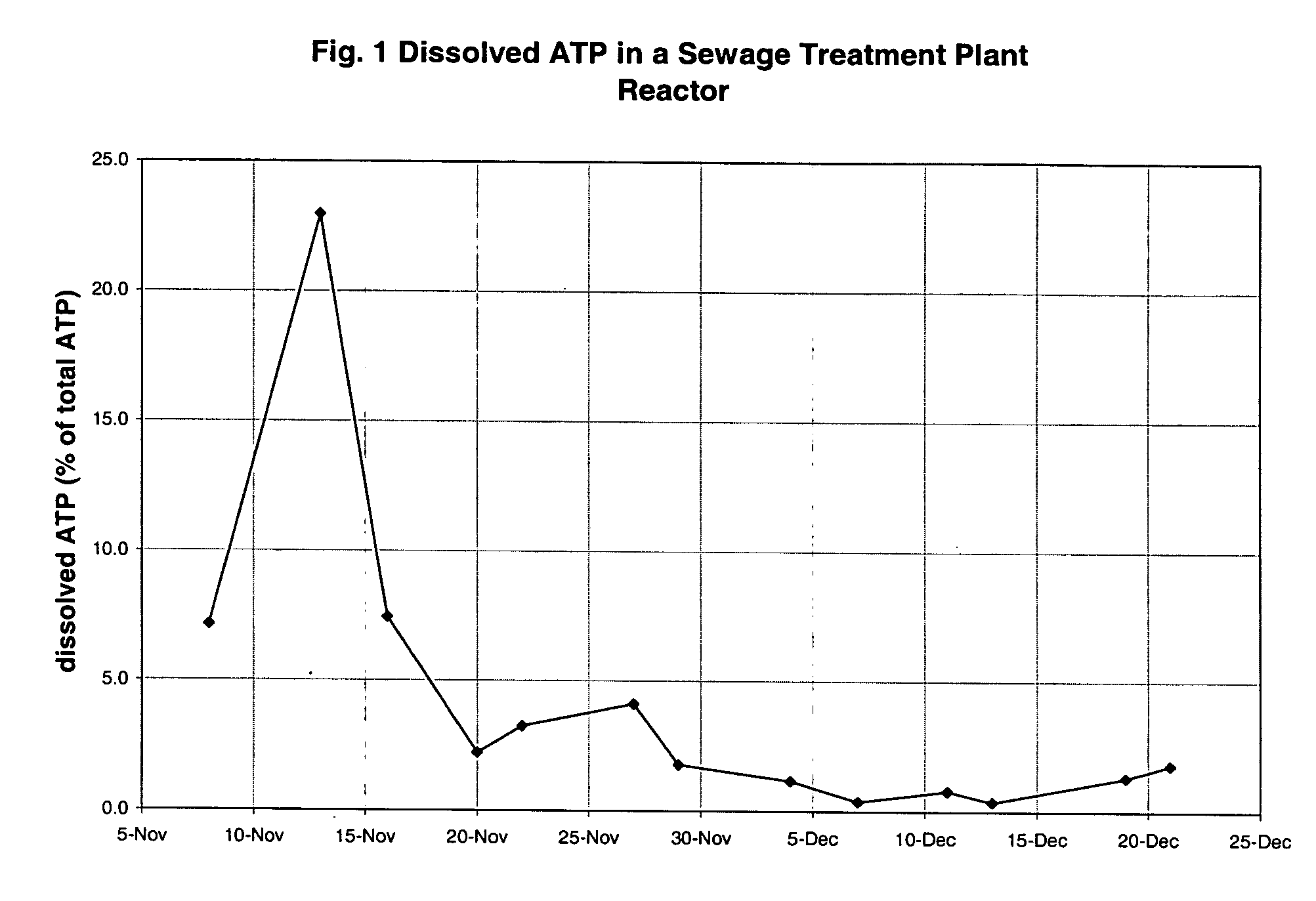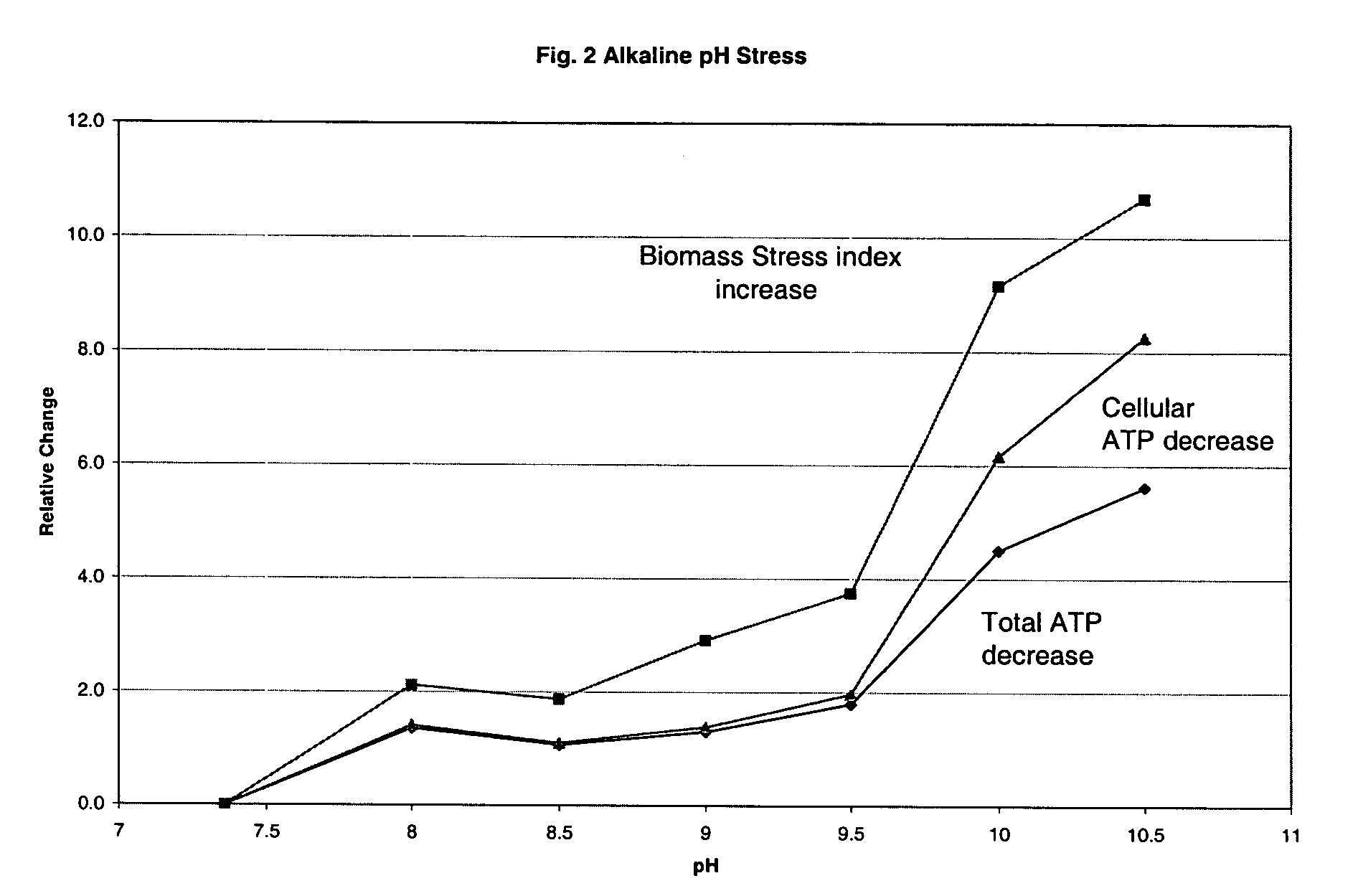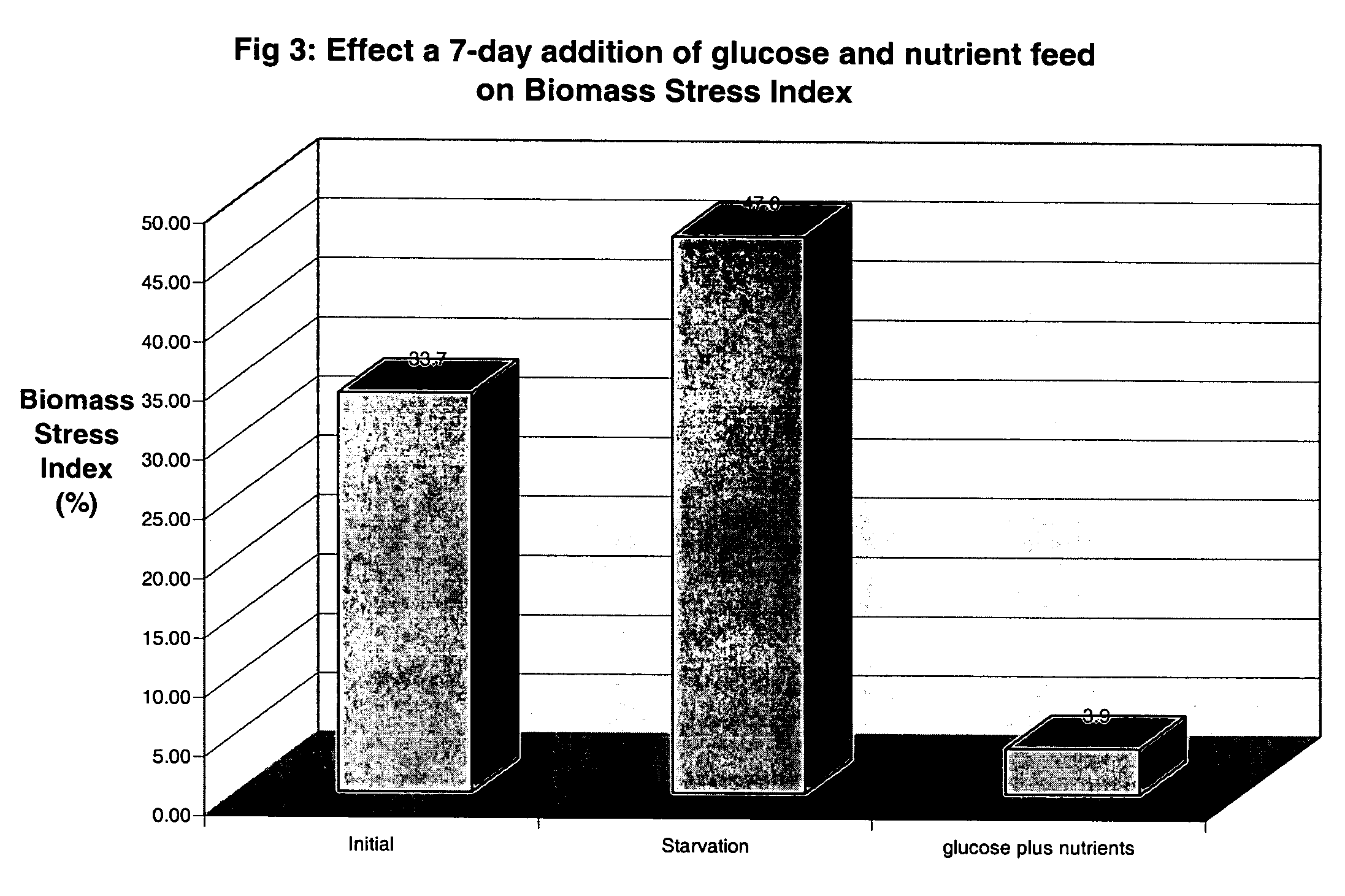Reagent system and process for adenosine triphosphate monitoring
a technology of adenosine triphosphate and reagent system, which is applied in the field of reagent system and process for adenosine triphosphate monitoring, can solve the problems of reducing the application range of reagents for biological process monitoring, reducing the application range of reagents, and not being able to optimize reagents for simple but accurate measurement of dissolved and total atp
- Summary
- Abstract
- Description
- Claims
- Application Information
AI Technical Summary
Benefits of technology
Problems solved by technology
Method used
Image
Examples
example 1
[0059] The pH of the reactor MLSS sample was adjusted to near neutral, then dissolved ATP and total ATP were measured. Next, the sample pH was raised to pH 8.0 and the ATP tests were conducted again. This procedure was repeated several times, raising the pH by increments of approximately 0.5 units each time. During the entire experimental period, the sample was aerated to ensure an adequate supply of oxygen.
[0060]FIG. 2 shows the changes in three ATP parameters (total ATP, cellular ATP, and biomass stress index) relative to their values at the beginning of the experiment. The biomass stress index is the dissolved ATP calculated as a percentage of the total ATP.
[0061] For example, by the time the sample had been adjusted to pH 10.0, the total ATP of the sample had decreased by a factor 4.5, while the cellular ATP (total ATP minus dissolved ATP) had decreased by a factor of 6.2, and the biomass stress index increased by a factor of 9.0. The use of dissolved ATP to calculate cellular...
example 2
[0063] Two bench-scale reactors were filled with samples that had recently been obtained from the reactor of a municipal sewage plant. The reactors were maintained at ambient temperature, continuously aerated, and the pH was adjusted daily to pH 7.0-7.1. One of the reactors was fed daily with 2,000 mg / L glucose, 100 mg / L nitrogen (from an NH4Cl solution), and 20 mg / L phosphorus (from a Na3PO4 solution), while the other reactor was not fed. Furthermore, water losses due to evaporation were replaced daily in both reactors.
[0064] The sample from the sewage plant was analyzed for total and dissolved ATP concentration immediately prior to initiating the experiment. One week later, the contents of each reactor were also analyzed. The biomass stress index was calculated as a percentage of the total ATP for each. By reviewing the results, shown in FIG. 3, it can be seen that the biomass stress index of the sample was relatively high (greater than 300%) in the sample before it was incubated...
example 3
[0074] An environment of oxygen deprivation was produced by spiking a reactor sewage plant sample with 2,000 mg / L glucose plus nitrogen and phosphate nutrients and distributing the mixture into a series of test tubes. The test tubes were capped, sealed with Parafilm™ laboratory wax, then placed horizontally in a rotary shaker to provide constant mixing at 190 rpm within the tubes. After various periods of incubation, one of the tubes was removed from the shaker and subjected to an ATP test battery consisting of total ATP, dissolved ATP, and DARR tests. The spike of ATP delivered to the sub-sample used for the DARR test raised the dissolved ATP concentration by 10,000 ng / mL. Ten minutes after the addition of the spike, a total ATP test was conducted on the sample.
[0075] It was assumed that as glucose was degraded by the microorganisms in the test tubes, the oxygen would be depleted. To ensure that this would occur, a dissolved oxygen uptake rate (DOUR) test was conducted prior to st...
PUM
| Property | Measurement | Unit |
|---|---|---|
| pH | aaaaa | aaaaa |
| concentration | aaaaa | aaaaa |
| concentration | aaaaa | aaaaa |
Abstract
Description
Claims
Application Information
 Login to View More
Login to View More - R&D
- Intellectual Property
- Life Sciences
- Materials
- Tech Scout
- Unparalleled Data Quality
- Higher Quality Content
- 60% Fewer Hallucinations
Browse by: Latest US Patents, China's latest patents, Technical Efficacy Thesaurus, Application Domain, Technology Topic, Popular Technical Reports.
© 2025 PatSnap. All rights reserved.Legal|Privacy policy|Modern Slavery Act Transparency Statement|Sitemap|About US| Contact US: help@patsnap.com



